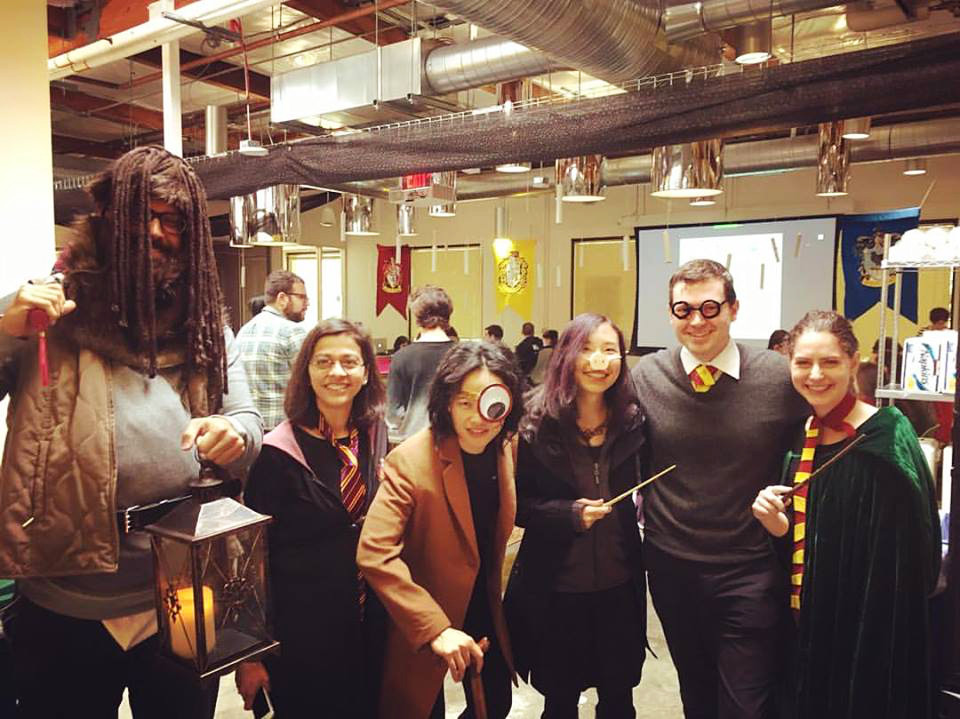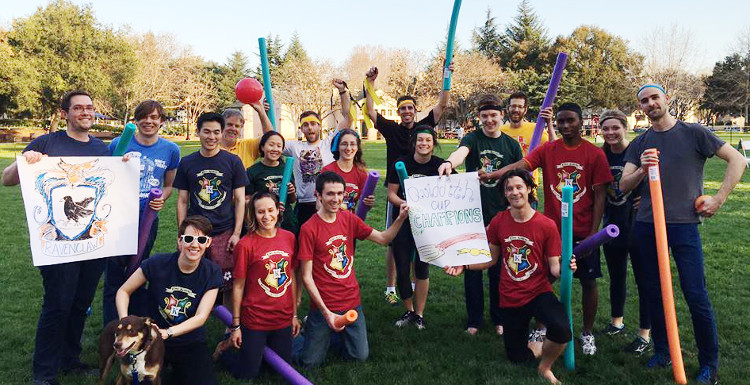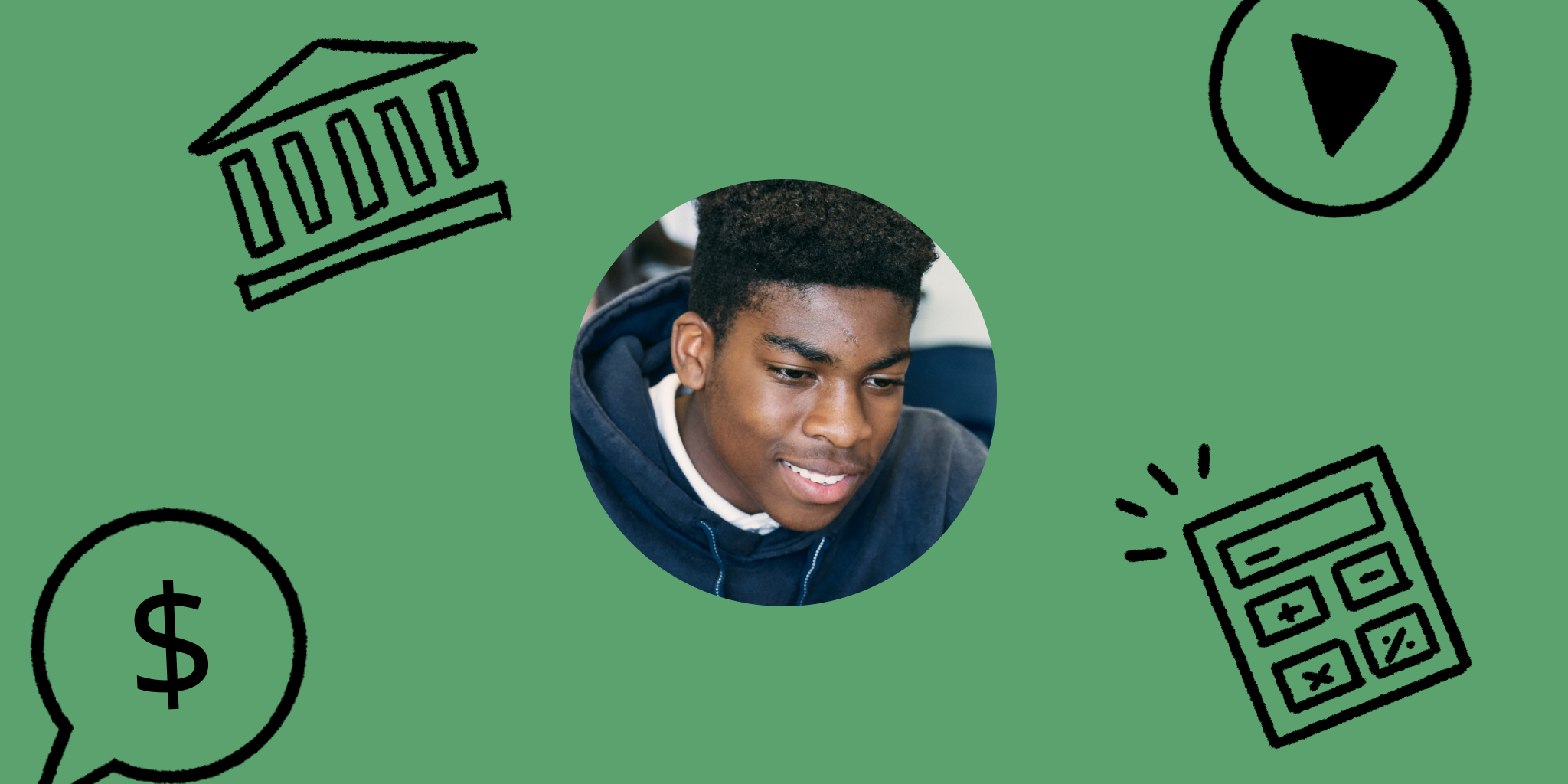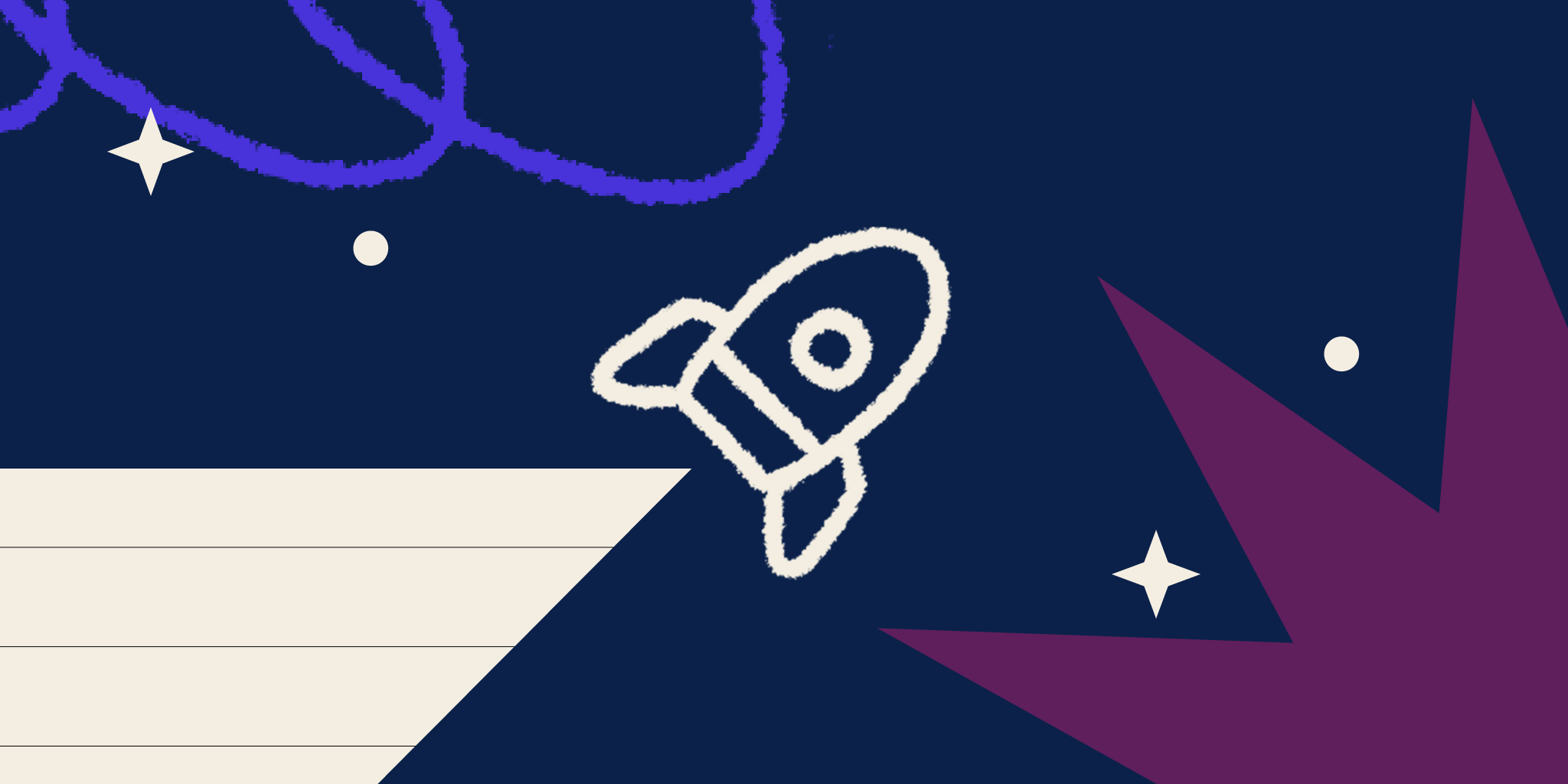By Tom Yedwab
As an organization whose raison d’être is learning – we in fact have a campaign called “You Can Learn Anything!” – having a dedicated time where anyone at Khan Academy can tackle a new problem and learn something by doing is kind of a no-brainer.
Most software engineers I know have a strong creative impulse – so strong, in fact, that no matter how interesting our workdays, we can’t help thinking about unexplored software frontiers in our downtime. For example, we make open-source contributions, start independent projects, and some gather with friends for hackathons. As a company we recognize that this innate drive for creativity exists and that letting everyone on the team (not just engineers) express it can bring the team closer and make the company substantially better. This is why twice a year we take a break from our projects so we can focus on our internal company hackathon.
Why hold a hackathon? Clearly, hackathons are a fun and exciting event: Hackers form teams to collaborate on projects, share ideas over catered lunch and dinner, and demo something amazing. Winners are chosen, and sometimes the ideas become real products later on, but this isn’t the hackathon’s goal. Reflecting on our favorite experiences, we found that being able to work with others you don’t normally work with is a good way for the team to get to know each other better and bond a bit more. We also feel a sense of release of pent-up energy and a morale boost as all the constraints of building production systems and careful design and testing fall away. Most importantly, it allows individuals and the organization as a whole to learn a bunch of new things and explore areas that were previously unknown.
However, hackathons can have a bit of a dark side. Traditionally, they run through the night, provide primarily junk food like pizza and energy drinks, and are generally unfriendly to those who might have families or responsibilities outside of work. As a team committed to sustainable, healthy lifestyles, we choose not to subject ourselves to this. That’s why we branded our first internal hackathon the “Khan Academy Healthy Hackathon” back in 2012.
Of course, just calling a hackathon “healthy” doesn’t make it so. Over the years, we’ve experimented with several formats to find the one that feels most inclusive (everyone in the company can participate) and sustainable (everyone is rested and healthy at the end and can resume a normal schedule immediately). We tried a few different formats; here’s some of what we learned:
1. It’s not that hard to be healthy
Our methodology is simple:
- Kick everyone out at 11:45pm and don’t allow them back in until 9:30am. (Do people cheat? Probably, yes. But working through the night is definitely not the norm.)
- Cater healthy meals for lunch and dinner. No piles of junk food or energy drinks.
- Schedule breaks to do yoga, outdoor activities, or improv to get people out of their seats periodically.
- Don’t take things too seriously:
2. “Hack weeks” are more inclusive, but weekend hackathons feel more relaxed
I have a family at home and obligations that often keep me from attending weekend events at work. I’m not against having a company hackathon that starts Friday night and runs through Sunday, but having one that I can also attend feels great and gives me a chance to share my ideas as well.
Our initial take at an alternative was a week-long (Friday to Friday) Healthy Hack Week, which meant that everyone could attend at least 5 days, with some coming in over the weekend as well. The consensus was that, fun though it might have been, there was a definite decline in energy around Wednesday and productivity fell noticeably. I also observed that a lot of projects were scoped far more optimistically than a two-day project would be (“think what we can get done in a whole week!”) and the result was a few projects that weren’t ready for a demo at the end.
This year we compromised and for our first hackathon in February we scheduled it Monday to Friday, which felt very natural and was fairly easy to plan for in advance. All running projects could simply omit that week from their planning, and all meetings were canceled.
The other side of the compromise is to still do a weekend hackathon in July (this week in fact!), when the summer interns will be able to join in. This has the advantage that it won’t require us to sacrifice another whole week from all our projects (interns are with us for precious few weeks in the first place) and it has a more relaxed feel since it’s outside work hours.
3. Brainstorming is best done in advance
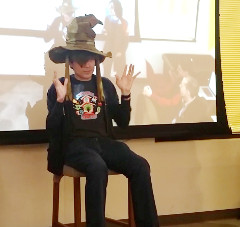
This February we happened to have Hack Week scheduled the week after our company off-site. One of the activities during the off-site was to draw our ideas on post-it boards and hang them around the room, science fair style. The goal was to drum up support for the really cool ideas and get people to collaborate on them. This was wildly successful and got everybody totally pumped to work together.
We had also just spent a lot of time discussing company goals and strategy, and so everyone’s mind was laser focused on the critical challenges facing Khan Academy in the coming year. As a result, almost all the projects seemed to explore and inform the direction our existing and upcoming products were heading. While some demos were prototypes of technologies we would later ship (including one project that provided a blueprint for a major performance improvement initiative), others were educational, thought-provoking or inspirational.
4. A theme can go a surprisingly long way
When planning our Healthy Hack Week, the discussion quickly turned to planning a theme for the decor and events. I must admit I was skeptical at first that this was necessary, especially when we settled on a theme having to do with a certain fictional wizard. There is, in fact, no particular connection between what we do and that fantasy world, so I figured it would just be good fun to dress up and everyone would quickly forget and focus on their projects.
The reality was much, much better than that.
Immediately once the theme was suggested, we hit upon the idea of sorting everyone in the company into houses (yes there was a sorting hat and a ceremony, and yes it was a riot). That led to the idea of being able to award points to the houses, and since no one felt particularly qualified to dole these out our own Eli Feasley built a Slack bot as a pre-hackathon hack project to track the house points.
Here is how it actually turned out:
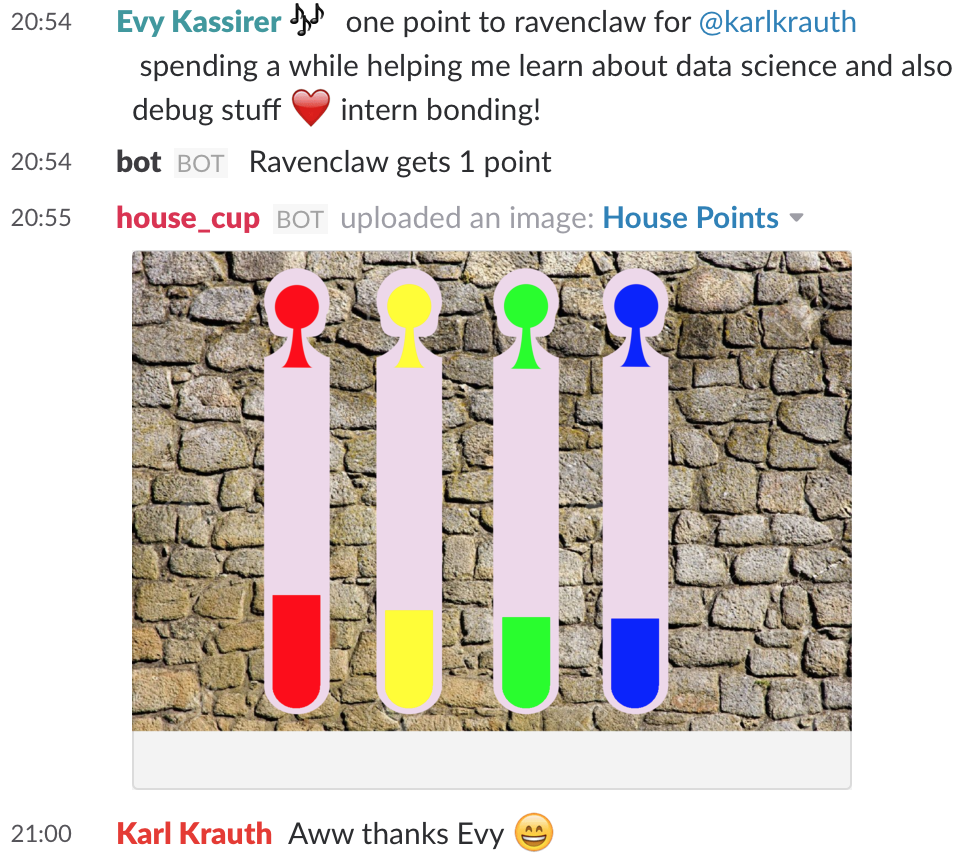
This was probably the most surprising highlight of the hackathon: a simple bot and some randomly-assigned teams led to spontaneous outbursts of appreciation and recognition between team members! Folks from across the organization who happened to be assigned the same house had something in common and something to talk about at lunch, sitting under their house’s banner.
It was actually a little bit painful to go back to work as usual, and there was a strong temptation to keep the houses long-term. We may yet bring the idea back in some form, if only for the next hackathon.
Hackathons are one of my favorite things we do at Khan Academy and have been the source of some of our most creative and thought-provoking new ideas. If you are planning a hackathon yourself I hope you find some of these findings helpful. If you do, drop me a line (tom at khanacademy.org) and let me know how it turned out!
Big thanks to Hillary Acer for organizing the whole mess, Eli Feasley for writing the Hogwarts Bot and the whole Khan Academy team for participating!

